DJCAD Degree Show 2017: Product Design and Digital Interaction Design
Product Design and Digital Interaction Design exhibits are displayed together in the lively Social Digital space on Level 5 of the Matthew Building. Here we can see the designs of the future, where some of our brightest new designers are presenting their solutions to a range of challenges in the modern world. For some, the future is already here – at least one exhibitor cannot display too much information about her proposed product as there is a patent pending on her work. Looking at the other works on display, one cannot help but feel that many of them could soon be in the same situation.
The challenges presented range from the life-saving to the high-end luxury market. In Product Design, Clive Pinder presents us with a solution to the problem of keeping essential insulin supplies cool for diabetic sufferers who wish to go out and about, trekking or backpacking in hot countries. Meanwhile his fellow student Alberto Negro provides a stunning design for a minimalist control device linked to marble lights for luxury hotel bedrooms.
Other product designers address the needs of children. Hazel Kelly’s “Assembly” is a tactile workstation that addresses the requirements of children and teachers following the National Curriculum for Excellence, while Katrina Stevens’ delightful food preparation system allows small hands to safely handle sharp knives while preparing food, all in a system which can easily be placed over a sink to minimise mess. The elderly are also considered; the needs of dementia sufferers, increasingly prevalent in our society, are met in a caring way by Katryna Callaghan’s dementia bench, which can be programmed for the individual sufferer with relevant music and other significant personalised sounds.
Potential users of the wide range of works on display also include travellers. The natural propensity of weekend travellers to try to travel light by taking a bag that is just too small to accommodate the purchases they make on their trip is addressed by Lidia Gushcina. Her smart handbag evolves through clever use of hidden folded compartments into a larger holdall, and can further expand into a cabin-bag sized piece of luggage by simple unzipping. For those intent on exploring further afield and for longer, Zoe McMillan’s programmable travel tag offers an ingenious way of keeping in touch and notifying family and friends of the traveller’s location and well-being.
Also among the product designs we encounter George Beaton’s system to assist the visually impaired when shopping for clothes. Audio feedback concerning the garments they have selected enhances their experience when making their fashion choices. Andrew O’Riordan, a keen golfer himself, has come up with an ingenious hand-held device to assist with putting; his “Green Reader” tells the player the inclination of the green with other measurements to improve the chances of sinking that ball. This is surely guaranteed to be a big hit in Scotland, Home of Golf.
Amidst the displays of the Digital Interaction Designers we find Philippa Gibby’s vegan menuapp, which creates a platform for the details of vegan-friendly restaurants in a given locality. With veganism increasingly becoming a lifestyle and ethical choice for many, this is sure to appeal. Meanwhile Marina Metaxa’s system ‘VIMA’ provides an interactive exercise mat to provide guidance and coaching to those working out using high intensity interval training.
Amongst the high-tech designs, a humorous note is struck with Al-Hady Aladin’s quirky display of interactive puppets designed to assist in conveying information, while Anna Morozova’s ‘Hidden Dundee’ provides an informative and entertaining way to interact with specific locations in the city and learn more about the hidden story they hold.
All in all, the range of products on display is a tribute to the skill and imagination of the students of these Design courses.

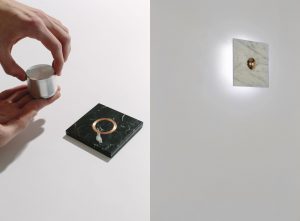
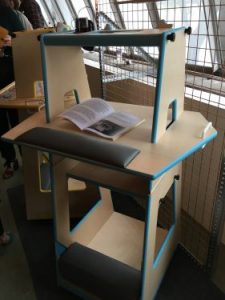
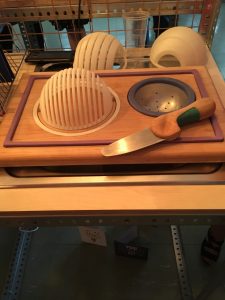
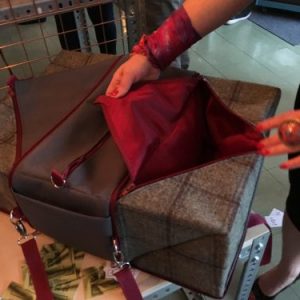
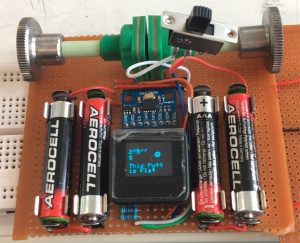
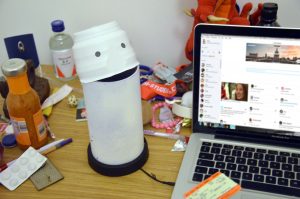
Leave a Reply